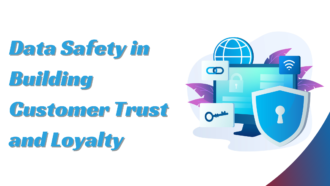The Ultimate Guide to Running Effective Meetings: A Step-by-Step Approach
Effective meetings provide value to the attendees and help them accomplish their goals. They can be formal or casual, scheduled or unscheduled, and take place in person, over the phone, or virtually through email or other technology.
Effective meetings provide value by helping people:
- Plan strategically – Planning in advance of a meeting helps participants know what they need to accomplish and how they will do it.
- Communicate effectively – Effective meetings can allow people to communicate on difficult topics, such as budget cuts or employee performance issues.
- Agree on next steps – By using moderated discussions and brainstorming techniques during a meeting, participants can agree on meeting frequency and the next steps as a group without having to come up with ideas individually first.
Below is an ultimate guide on how to run effective meetings;
Define the meeting objective
Defining the meeting objective is critical to having a good meeting. It should be clear from the start what the goal of the meeting is, whether it’s to come up with a new idea for your business, decide on a product or service, or get everyone together to catch up.
If you don’t know where you want to go with your meeting, you can’t expect people to know either. Your goal must be clearly communicated at the start of the meeting and throughout so that everyone knows what they need to achieve during the discussion.
Create an agenda
Another critical step in creating an effective meeting is to create an agenda. The agenda should be posted online, on a shared drive, or on a computer in the meeting room. The agenda should also include the time and place of the meeting and any special accommodations that might be required for attendees with disabilities (for example, ASL interpreters).
Set expectations
Creating an effective meeting checklist also entails setting clear expectations for participants. For example, you can tell participants they are expected to be on time and prepared for the meeting. You can also tell them what behaviors are unacceptable at meetings, for example, raising your voice or interrupting another person.
Conduct introductions
You can create effective meetings by making introductions at the session’s beginning. Introductions allow attendees to get acquainted with each other and share their background information about themselves, their businesses or organizations, or their personal interests related to their workplace goals.
Use visuals
For meetings that require visual aids, print out copies of any important documents, take photos, or use screen-sharing software such as Skype or Google Hangouts so everyone can see the same thing at the same time. The more people can see what’s happening onscreen or on paper. It will be easier for everyone to follow what’s happening in real time during the meeting.
Manage time effectively
To run effective meetings, it is essential to remember to manage time effectively. If you don’t have enough time during the day, your meetings will be ineffective and unproductive. You don’t want your meetings to run overtime, so make sure you schedule them for the right amount of time.
The best way to do this is by using a timer. This will help track the time left and when it’s up. You can also use a stopwatch or countdown timer if you want more precision.
Use technology effectively
Meetings are often planned to discuss new ideas, but the process of getting everyone together can lead to more meetings and wasted time. If you need people to get on board with a new idea, consider using technology to communicate as much as possible before your meeting.
For example, if you have a presentation that needs feedback from several people, send it out in advance and ask for comments before the meeting. This will help you avoid time-consuming group discussions during the meeting and ensure that everyone comes prepared with questions or feedback about the topic at hand.
Invite the right people
A good rule of thumb is that if someone isn’t directly involved in the matter at hand, they should not be invited to the meeting unless their presence is absolutely necessary. This will ensure that meetings remain focused on accomplishing their objectives rather than getting derailed by unnecessary chatter or idle speculation. It also helps everyone stay on track with their work afterward too.
Consider time constraints
Meetings can be brief, or they can last for hours. Ensure your staff knows how much time is available for their portion of the agenda so they can prepare accordingly. If a meeting runs over its allotted time, it will likely lose effectiveness as participants become bored or lose interest in what’s being discussed.
Ensure everyone gets involved
Encourage active participation from all attendees by asking questions and soliciting feedback from them throughout your meeting sessions. Your questions should encourage them to think about their thoughts rather than simply answering yes or no responses.
Finally, running effective meetings can help you to get things done. Meetings are the best way to accomplish tasks, so you should run effective meetings if you can use them.

















